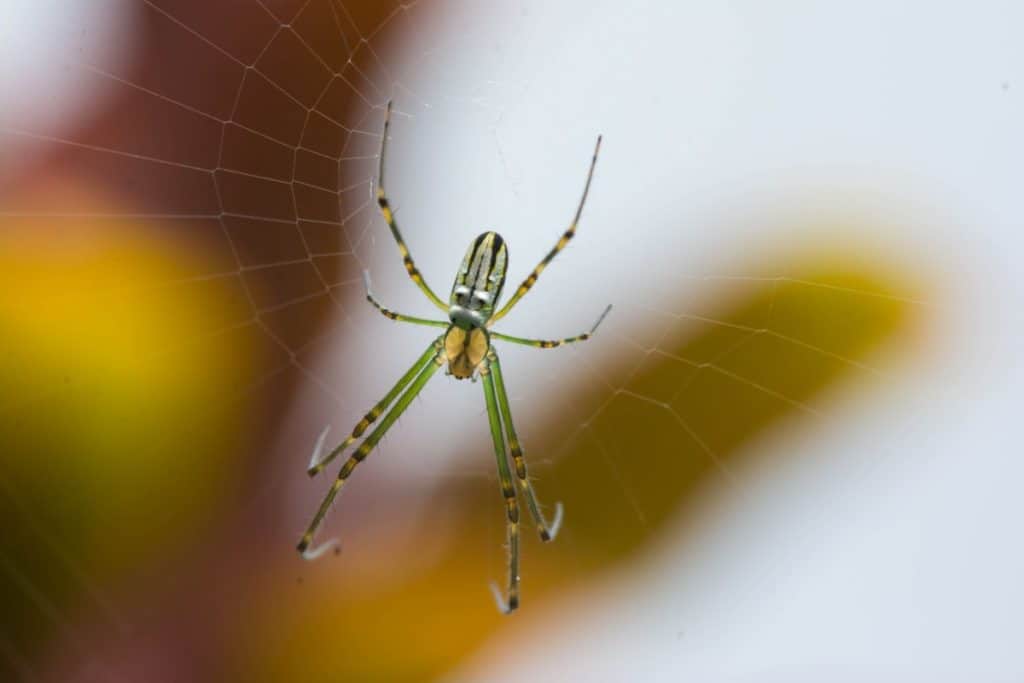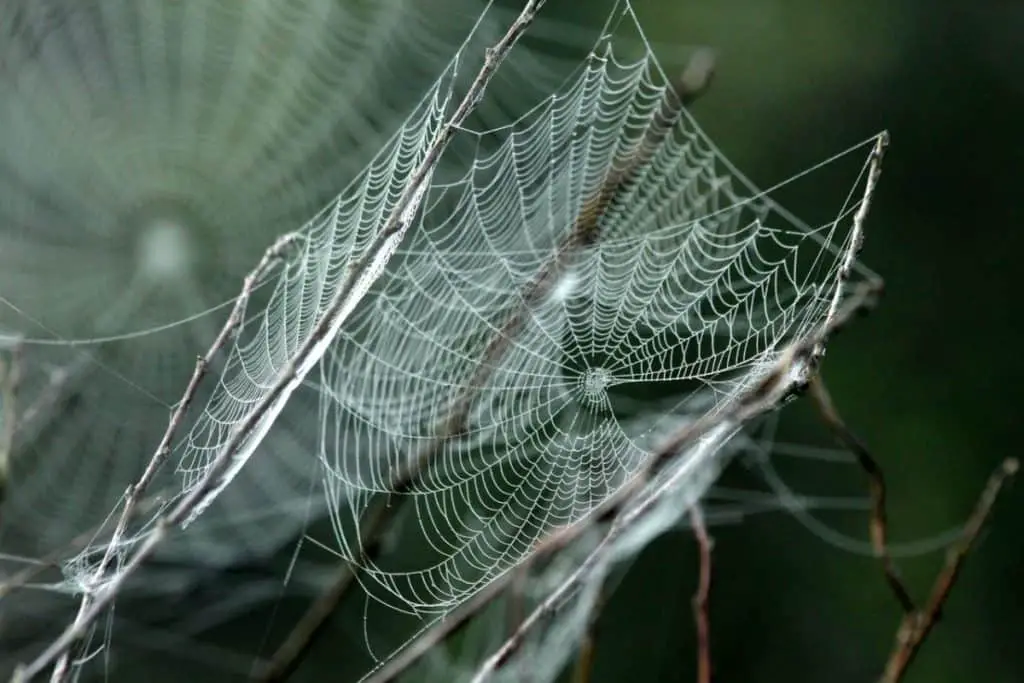
Spiders are obligate carnivores. These creatures feed on insects such as flies, mosquitoes, cockroaches, fleas, moths, and even other spiders.
The spinning of webs is one of the techniques some spider species use to catch prey. Once caught, spiders inject the prey with digestive fluids and feed on the remains.
Most spider species use natural materials to spin their webs. These materials are sticky and elastic to trap the prey with ease. But some webs contain chemical repellents for hunting and keeping away creepy crawlies.
So, with this knowledge in mind, the question that comes to mind is whether spider webs can be poisonous or not and whether these webs laced with toxic substances can be poisonous to humans as well.
Keep on reading this article, as you’ll find the answers to these questions in this article.
Can Spider Webs Be Poisonous? Some spider webs can be poisonous as some spider species lace their webs with toxic substances. These chemicals help to kill their caught prey but can also be lethal to other creatures invading their space.
Research shows that the toxin substances contain neurotoxins. This compound is proven to paralyze the prey on the spider’s web and it functions the same way as venom would. It is a confirmation that spiderwebs can be poisonous when it comes to certain spider species.
How Does the Spider Web Become Poisonous?
Spiderwebs are icky and form a ground for trapping prey. The silk material used for spinning the webs is elastic to capture the prey more effectively.
But some spider species have gone an extra mile of lacing their webs with Neurotoxins. They intend to then subdue and kill the prey with ease.
The chemical substance that is slathered on the webs of these spider species usually acts like spider venom. It paralyzes the prey on the web and also helps in keeping away other creepy crawling creatures.
Besides that, the compound that these spider species use contains 2-pyrrolidinone which is a chemical repellent. It prevents ants, caterpillars, and moths from accessing the spiderwebs.
Larger spider species are only known for secreting toxic chemicals on their traps. Smaller spiders do not secrete any chemical substances on their webs.
Smaller spider species spin fragile and light webs that cannot support larger prey. In most cases, these spiders usually hide and impound their prey on their webs.
But larger species that spin toxic webs usually find their prey already dead on their webs. The chemicals slathered on the spiderwebs make the work for these bigger spiders a lot easier.
If you can’t get enough of learning about spiders then I encourage you to check out the “Spiders Category Page” which consists of various articles that give answers to spider-related questions.
Can These Toxic Webs Kill Prey?
Orb-weaver spiders are known for constructing huge and beautiful webs which creates a wider spot for trapping meals for their survival.
Research shows that the web not only traps meals but also helps to paralyze the prey. Thanks to the neurotoxin substance slathered on their webs.
Orb weavers are among the largest species of spiders. These species are known for secreting toxic substances that disintegrate the body of the prey for easy digestion.
It is now clear that the sticky substance on the webs can kill prey without the spider impounding and injecting the venom. The chemical content that the spiders slather on their webs makes the webs paralytic traps.
Neurotoxins have protein properties and are packed in microscopic droplets. The toxic compound contains acid that dissolves the waxy outer cuticle of insects.
You should also know that the substance only works when it comes into contact with prey. It can also act as an antimicrobial to prevent other crawlers from stealing prey from their webs.
Many researchers have swung into action to find more about these paralytic webs. Research shows that the toxin plays other vital roles for spiders apart from killing the prey.
The complexity of spider web design is still under study. It is unclear how the web manages to keep the prey fresh for a couple of weeks.
What Spider Species Can Create Poisonous Webs?
Research shows that there are over 45,000 species of spiders on earth. But there are only a small number of spider species that can spin poisonous webs.
Most spider species are harmless and can often be found roaming around or in our houses. An example of a harmless spider is the Common House Spider.
However, spider infestation reduces the aesthetic appearance of your indoor space. It would be best to hire a cleaning company to help in the removal of the webs and elimination of the creatures.
The spiderwebs of the most common species are harmless. These small spiders do not slather their webs with neurotoxins which is a poisonous compound for killing the prey.
Some of the few harmful spider species that slather their webs with poison are Brown Recluse Spiders, Brown Widow Spiders, Red Widow Spiders, Redback Spiders, Orb-weaver spiders, and Funnel-web Spiders.

Are Spider Webs Poisonous to Humans?
Some spider webs are icky and slathered with neurotoxin. This chemical substance usually paralyzes and kills the prey to provide a meal for the spider.
Most spiders use natural materials to spin their webs. The contents of these materials are harmless to humans regardless of being slathered by toxic chemical contents.
The chemical substance is only harmful to insects and other smaller spider species. The poison contains acid that disintegrates the waxy cuticle of insects.
It would be best to be extra careful when handling these poisonous spider webs though as the spiders that have laced the webs can most likely still harm you.
Taking precautions whilst removing these webs should be given top priority. The best option is hiring house cleaning companies to come and help you clear the spiderwebs.
Do Spider Webs Harm Plants?
Spiders spin their webs in abandoned structures and plants. These are the areas where spiders can trap other insects for a meal.
No need to freak if you notice spiderwebs around your favorite houseplant. These silk structures rarely affect the growth and well-being of your indoor plant.
But webs might reduce the aesthetic value of your indoor plants. It would be best to remove the webs and spray the plant with insecticide to eliminate spiders.
You should also note that spider mite infestations on the plant might cause drooping of leaves. This issue needs to be solved with immediate effect.
Research shows that spider mites suck leaves cell sap and cause injuries. The tiny holes on the leaves ruin the well-being of the plant.
In Conclusion
Spiderwebs contain neurotoxins. These chemical substances help the spiders to trap, paralyze, and kill their prey. It is one of the ways for spiders to obtain nutrients from their surroundings.
The good news is that these poisonous spider webs are harmless to humans. It is, however, still a best practice to not remove poisonous spider webs yourself as the spiders that made the webs can still potentially be poisonous to you.

